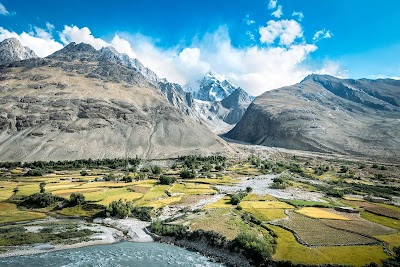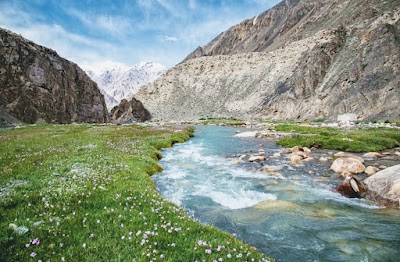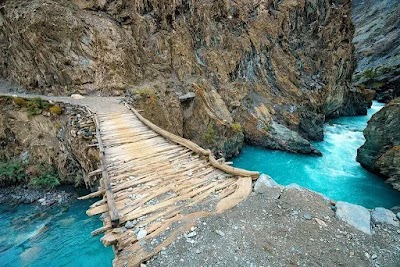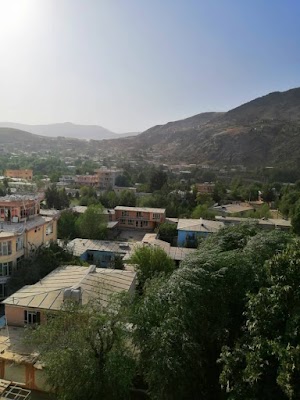Wakhan Corridor (دره واخان)
Related Places
Overview
The Wakhan Corridor is a captivating and remote strip of land in the Badakhshan region of northeastern Afghanistan, stretching approximately 220 kilometers (137 miles) from the country's northeastern tip. This unique corridor serves as a natural buffer between Tajikistan to the north, Pakistan to the south, and the Xinjiang region of China to the east. Rich in history and adorned with stunning natural beauty, the Wakhan Corridor is an essential destination for adventurers and history lovers alike.
The historical significance of the Wakhan Corridor dates back to the era of the Silk Road, where it functioned as a vital trade route linking Central Asia with the Indian subcontinent and China. This slender land bridge has seen the passage of merchants, explorers, and armies, fostering a remarkable cultural exchange. Notable historical figures, such as Marco Polo and the renowned Chinese Buddhist monk Xuanzang, traversed this region, adding depth to its rich heritage.
Geographically, the Wakhan Corridor is defined by its rugged mountains, high-altitude valleys, and pristine rivers. It is flanked by two of the world's highest mountain ranges: the Hindu Kush to the south and the Pamir Mountains to the north. These dramatic landscapes create a paradise for trekkers and mountaineers, offering breathtaking views and exhilarating adventures.
One of the most striking cultural aspects of the Wakhan Corridor is its diverse population. The Wakhi people, who are the primary inhabitants, have preserved a way of life that has largely remained unchanged for centuries. Known for their hospitality and resilience, they reside in small, isolated communities throughout the mountains. Their unique language, Wakhi, along with their distinct customs and traditions, provides an intriguing glimpse into a way of life seldom encountered in our modern world.
The Wakhan Corridor is also notable for its wildlife. This region is home to several rare and endangered species, including the snow leopard, Marco Polo sheep, and ibex. The establishment of the Wakhan National Park serves to protect this fragile ecosystem, highlighting the area's environmental importance. Nature lovers and wildlife enthusiasts will find a diverse range of flora and fauna, making the park a true haven for exploration.
Traveling to the Wakhan Corridor is an adventure that requires careful planning and preparation. Due to its remote location and challenging terrain, visitors should be ready for an exhilarating journey. Those who undertake this remarkable expedition are rewarded with breathtaking scenery, a profound sense of solitude, and the chance to immerse themselves in a culture that remains largely untouched by modern influences. The best time to visit is during the summer months, from June to September, when the weather is milder and mountain passes are more accessible.
Safety is a crucial consideration when planning a trip to the Wakhan Corridor. While the region is generally regarded as safe for foreign tourists, it is essential to stay informed about the latest travel advisories and respect local customs and traditions. Hiring a local guide can significantly enhance your experience, providing valuable insights and ensuring a smoother journey through this remarkable landscape.
In addition to its natural and cultural allure, the Wakhan Corridor holds geopolitical significance. Historically, it served as a buffer zone during the Great Game, a political and diplomatic struggle between the British Empire and the Russian Empire for dominance in Central Asia. Today, its strategic location continues to make it an important area at the crossroads of several nations.
In conclusion, the Wakhan Corridor is a destination like no other. Its blend of rich history, stunning landscapes, and vibrant culture offers an unforgettable experience for those willing to venture off the beaten path. Whether you are a history buff, nature enthusiast, or an intrepid traveler, the Wakhan Corridor promises an unparalleled adventure that will leave you with memories to last a lifetime.







